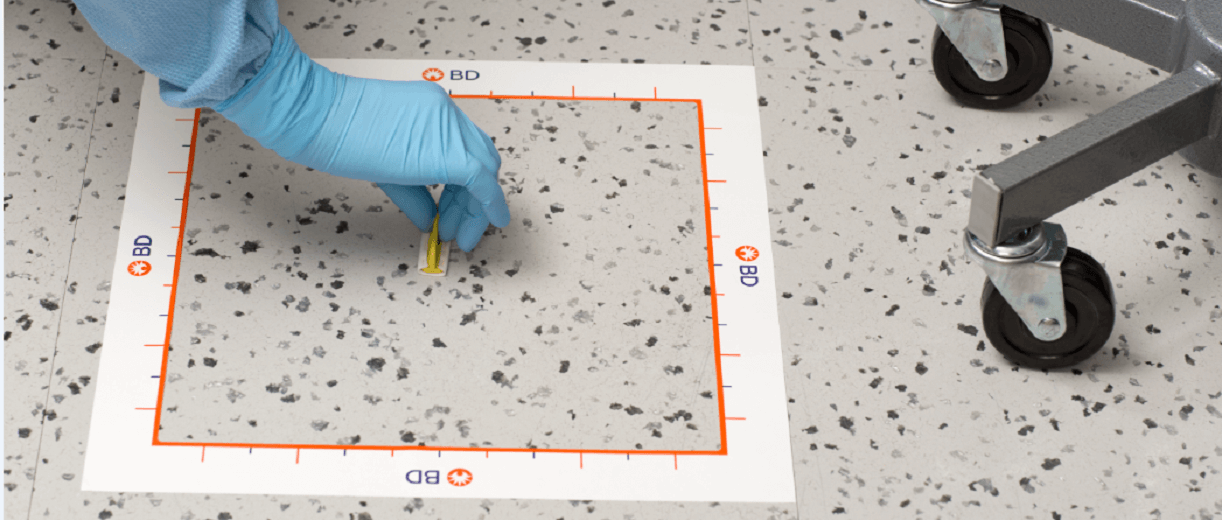New nursing guidelines recommend more frequent surface monitoring
Contamination from hazardous drugs (HDs) is a major health concern for healthcare workers (HCWs) in Europe1. Over 12.7 million of them are estimated to be potentially exposed to carcinogenic, mutagenic, and reprotoxic drugs2. Out of these HCWs, the World Health Organisation (WHO) Regional Office for Europe estimates that there are 7.3 million nurses and midwives in the WHO European region2. Nurses are the HCWs the most exposed to HDs1.
The effects of exposure to these kinds of drugs are the leading cause of adverse events in hospitals1 . In 2012, an estimated 91,000–150,500 people were reportedly diagnosed with cancer, following past exposure to carcinogenic substances while working in the European Union3. The same year, 57,700–106,500 deaths were reportedly caused by occupational cancer, making it the top cause of work-related death in the European Union3.
But a combination of safety measures may help prevent HD exposure and its associated health risks. These include, among others4 :
- Increasing the use of risk assessments
- Increasing the use of personal protective equipment (PPE)
- Promoting the use of systems offering full protection, such as closed-system drug transfer devices (CSTDs) during administration
- Making sure cleaning protocols are implemented in administration areas
- Carrying out regular surface monitoring
However, regular monitoring for HD surface contamination is performed in only 55% of European oncology outpatient units according to a 2019 European Biosafety Network survey of pharmacy directors and oncology unit managers4.
New guidelines for surface monitoring in care settings
The Spanish Nursing Research Institute collaborated with the Spanish General Council of Nursing to develop the Guide for Monitoring Surfaces for Hazardous Drug Contamination. This document is intended to supplement “Monitoring contamination of hazardous drug compounding surfaces at hospital pharmacy departments. A consensus statement.
Practice guidelines of the Spanish Society of Hospital Pharmacists (SEFH)1.”
The guide can help HCWs identify and monitor HD contamination during drug preparation outside of hospital pharmacies, transport, administration and disposal in different areas of all types of healthcare facilities and in the home, if necessary1. These guidelines explain the qualitative procedure for monitoring HD surface contamination1.
In order to improve the safety conditions of the nurses who prepare, administer and dispose of HDs, the guide strives to provide them with the necessary information to identify which HDs to monitor for, where to perform surface monitoring and how often to do it; along with steps to develop and then implement procedures to quantitatively monitor levels of HD contamination2.
Which hazardous drugs should you monitor for?
When performing surface monitoring, drug selection is important. Unfortunately, 23% of HCWs surveyed don’t monitor for the HDs used most frequently and with the highest risk4.
According to Tamara Domingo, member of the Spanish Nursing Research Institute and coordinator of the guide, “you can’t monitor all hazardous drugs used in healthcare facilities, so you have to create a list of target drugs. This way, each healthcare facility must evaluate the drugs most used and choose those you use the most for surface monitoring6.”
In addition to this, the guide recommends that you monitor for at least cyclophosphamide, as a subrogated marker, to control surface contamination in areas where drugs are administered2.
How often should you perform surface monitoring?
The United States Pharmacopeia General Chapter <800> on “Hazardous drugs—handling in healthcare settings” (USP <800>) recommends carrying out surface contamination monitoring at least every 6 months6. However, in nearly half (46%) of European hospitals, surface monitoring is only performed once a year4.
The authors of the Guide for Monitoring Surfaces for Hazardous Drug Contamination recommend determining sampling frequency based on the risk level of the area being monitored1. If the risk level is high, it should be carried out one or more times per week1. If the risk level is medium, it should occur two to three times per month1. If the risk level is low, then monitoring more than once per month should be sufficient1.
This practical guide will provide you with useful steps to implement or improve your surface monitoring programme in care settings outside pharmacies, where HDs are prepared, administered, and disposed of at your healthcare facility. The ultimate aim is to help nurses have a high level of protection when handling HDs, while ensuring proper patient care1.
References
- Domingo T, Fontán G, Enríquez M, et al. Guide for Monitoring Surfaces for Hazardous Drug Contamination. 1st ed. Spanish Nursing Research Institute, Spanish General Council of Nursing; 2021.
- WHO Regional Office for Europe. Nursing and midwifery: Data and statistics. 2021. Accessed on 24 December 2021, at https://www.euro.who.int/en/health-topics/Health-systems/nursing-and-midwifery/data-and-statistics
- European Commission. Safer and Healthier Work for All – Modernisation of the EU Occupational Safety and Health Legislation and Policy; 10 January 2017.
- European Biosafety Network. Observatory on current biosafety practice in European Oncology; 2019.
- DiarioFarma. Elaboran una guía para la monitorización de superficies con medicamentos peligrosos. 26 October 2021. Accessed on 22 December 2021, at https://www.diariofarma.com/2021/10/26/superficies-peligrosas
- United States Pharmacopeia Convention. USP <800> Hazardous drugs—handling in healthcare settings. In: Second Supplement to United States Pharmacopeia and National Formulary (USP USP 42—NF 37); 2019.
BD-52250




